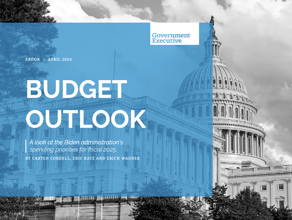Federal information-sharing plan may face hurdles
Proposal would give state and local law enforcement a more direct role in exchanging information.
A long-awaited government plan to improve information-sharing about terrorist threats got high marks from policy watchers but the roadmap has flaws that could diminish its effectiveness, a government intelligence expert said.
The report, sent to Capitol Hill on Thursday by the office of the national intelligence director, included blueprints for a cross-agency information-sharing environment, or ISE. The 165-page document complies with an intelligence reorganization ordered by Congress after the Sept. 11, 2001, terrorist attacks.
The proposal would give state and local law enforcement a more direct role in exchanging information but may have slighted the Homeland Security Department and the private sector, warned John Rollins, a former chief of staff for Homeland Security's intelligence division.
The strategy to concentrate the coordination of government information-sharing at the National Counterterrorism Center could frustrate some key players, Rollins said. While the report still calls for Homeland Security to be prominent in the effort, the agency wanted the initiative in-house and not at the center, he said.
Under the plan, the center would oversee non-federal groups, law enforcement, and state and local homeland security advisers but not commercial entities, Rollins said. Private-sector firms serve as "the eyes and ears of their facilities when it comes to critical infrastructure," he said.
If the plan's goal is "truly trying to pull together a comprehensive picture of the threats to the nation," minimizing the private-sector component is foolhardy, Rollins said.
A bright spot is the report's recommendation that the ISE program manager's position be extended for three years. The job was slated to sunset in 2007, Rollins said, noting that "somebody is going to have to be here to mind the shop and oversee the implementation."
Despite his criticism, Rollins said the overall plan is "very good, given the lack of support that was provided by the White House and the [intelligence director's office]." There was a "great deal of interagency infighting to get to this point," he recalled.
Thomas McNamara, the diplomat in charge of the data-swapping strategy, replaced John Russack, the original appointee who left abruptly after less than a year. He said there also were other delays in publishing the plan, which has been in the works since last December.
Heritage Foundation policy analyst Mackenzie Eaglen said the report is solid, "but the outcome remains to be seen." Her think tank has "always been a fan of this effort" and believes the counter-terrorism center is the right body to oversee stakeholders.
"Coordinated strategies help develop sound policies rather than developing technologies in a vacuum," she said. The report realizes that by involving everyone, she said. "You can't leave out state and local. You can't leave out the private sector."
Susan Collins, the Maine Republican who chairs the Senate Homeland Security and Governmental Affairs Committee, called delivery of the report to Congress an "important step" in improving the government's ability to share information.
"Information-sharing breakdowns can have catastrophic consequences for the defense of our nation," Collins said. "Good intelligence information and analysis is of little use if it cannot be shared effectively."




